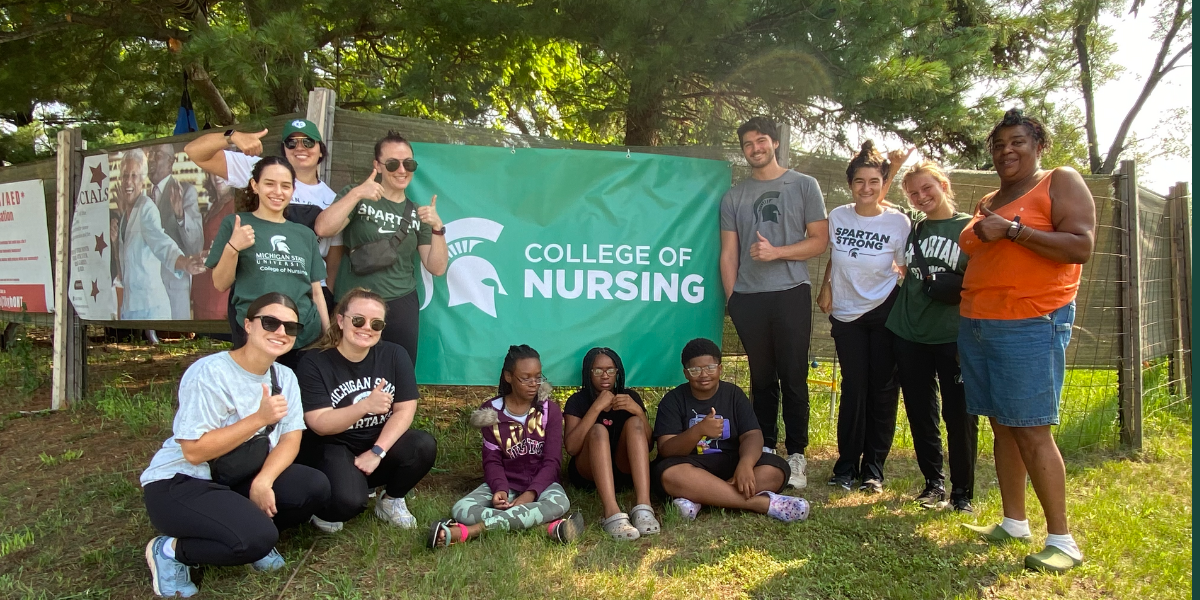News
ABSN students bloom in Detroit

When someone thinks of clinical education, a garden is something that wouldn’t come to mind. For the students in the Michigan State University College of Nursing, they spent their clinical days under the summer sun at the Berg-Lahser Community Garden in Detroit.
Detroiter Carla Mclure spent her childhood at her grandparents’ garden. Growing fresh fruits and vegetables while sprouting an appreciation for her community. Now she gives back through classes for elementary students during the summer in Berg-Lahser Community Garden.“I had students from the Detroit Service Learning Academy come and I was surprised that students really wanted to learn how to garden,” said McClure. “So, this summer, I wanted to teach kids community skills they won’t learn at school.”
That’s where accelerated BSN (ABSN) students and assistant professor Dr. Rhonda Conner-Warren fit in. With their help they were able to make a cohesive plan to empower and educate local elementary students on first aid and more. The students were invited to participate with other organizations in a series at the garden called First Aid Fridays.
“We assessed what Ms. McClure’s learning objectives were for the kids at the camp,” said Rachel Dubecky, ABSN student, “For our group, we wanted to focus on first aid and heat exhaustion.”
The students used a “windshield survey,” which collects data on communities by having the surveyor drive around the community and assess what resources the community has.
“When we realized that there weren’t a lot of urgent cares in the area, we felt it was important to educate the kids on basic first aid,” said ABSN student Maggie Zehrdine.
According to the Centers for Disease Control and Prevention, 65,000 people will visit the emergency room for heat-related stress a year.
“While our project focused on heat exhaustion, we also felt it was important to lecture on first aid and other heat related illnesses,” said Zehrdine.
Using simulation, they were able to show students what heat exhaustion would look like but also the steps to help someone who is suffering from heat-related illness, including what to do when you call 911 for help and how to give detailed information to the operator.
“I want kids to be confident enough to be able to talk to 911 operators on the phone and to be able to follow the operator’s instructions,” said McClure. “This kind of preparedness could save someone’s life one day.”
“The kids can potentially help someone in an emergency in the future, at home or in public,” explained Zehrdine. “They could stay calm and use the tools they learned at this camp to help someone in danger.”
